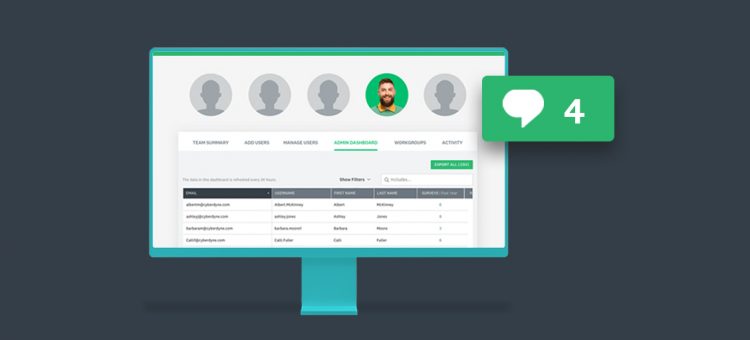Team efforts require collaboration. It’s one of those universal business truths that span industries and apply to companies big and small.
But it’s a tough time for team efforts. Like so many other things, the coronavirus pandemic has seriously affected how people are collaborating on day-to-day work. In our recent survey of SurveyMonkey customers, we found that 50% are using more business tools than before the pandemic began—and 64% of those respondents said they’re specifically using more collaboration tools. Meanwhile, another study we conducted in partnership with Microsoft found that more than twice as many workers say their connection with colleagues has declined as say it has improved (34% vs. 15%).
With current collaboration challenges in mind, especially those of remote teams, we wanted to walk you through all the collaboration tools available in SurveyMonkey so you can get a clearer picture of what’s available for your plan and beyond. Since surveying is so often a team effort, we’ll help you understand all the best ways for your team to work together.
For everyone
No matter your plan, there are numerous ways SurveyMonkey allows you to collaborate as you build your survey, send it out into the world, and analyze results.
- Invite people to preview your survey: Send a survey preview link to anyone, anytime. Getting another set of eyes to preview and test your surveys is the best way to make sure everything makes sense and works as anticipated.
- Get comments from collaborators: The folks who preview your survey can leave comments on both your survey design and your survey results. You’ll get an immediate notification that you have comments in SurveyMonkey, so you’ll be able to act on collaborators’ suggestions or learn what they think about initial findings.
- Enable shared response alerts: Did you know you can automatically send daily email updates to all stakeholders whenever your survey receives responses? This is a convenient way to keep everyone in the loop without scheduling meetings or share-outs.
- Take advantage of free integrations: Automate your workflow by combining the power of SurveyMonkey with tools like Microsoft Teams, OneDrive, and Google Drive. Wondering about other apps? Check out our roundup of SurveyMonkey integrations every team should be using.
For team plans
In addition to the collaboration features available for everyone, team plans take into account the varied roles that your teammates play when it comes to survey creation.
- Give team members full access to design, send, and analyze: When the survey process takes a village, you can make sure that everyone has the ability to do it all. This is especially helpful for teams scattered across cities or time zones, as no one has to wait to access what they need.
- Cherry-pick who can view and edit: Your team plan is flexible, which allows you to collaborate on a case-by-case basis. You can grant or restrict collaborators’ access to the survey design or results based on how they’re contributing to your project goals.
- Load up your Library with branded survey assets: Your library can house images, documents, templates, themes, and questions that keep your surveys consistent. Team members with Full Access seats can use these assets to create better surveys that reflect your brand at every level.
- Add contributor seats to make the most of your data: If you have stakeholders who specialize in survey analysis, you can outfit them with Contributor seats. This is a lower cost way to allow more people to dig into the data and only pay for the features they need.
For Enterprise plans
Adding to all the collaboration features above, Enterprise plans include even more ways to collaborate—and give you the power to do it at scale.
- Allow for organization-wide collaboration: Consolidating under one Enterprise plan, as opposed to many individual or team plans, allows for collaboration across your entire organization.
- Get greater visibility and user management: With an Enterprise plan, your IT department can better support and assist users with visibility into survey usage. They’ll also be able to manage default settings and permissions, paving the way for smoother survey creation.
- Create workgroups: Primary Admins and Admins can create workgroups to quickly and easily share surveys with everyone involved in a shared project. Plus, they can manage members, assign roles, and change owner status so each team member has the right level of access to surveys.
- Send smart notifications: Loop in the right people, from the right team, based on rule-based response criteria. For example, you can set up a smart notification for a customer satisfaction survey that alerts a specific CSM in your CX workgroup when a customer ranks their experience negatively.
- Use our integrations with systems of record: Integrate survey data with systems such as Salesforce, Marketo, and Eloqua to increase how your team views and shares feedback. You can also pull specific feedback data into tools such as Microsoft Power BI or Tableau to create visualizations and dashboards. With these resources to consult, your team can drive the right actions and decisions.
- Make strategic, data-driven decisions: When you work under one Enterprise license, you can use the data you get to collaboratively inform strategic decisions for your entire company. Gathering feedback through surveys will become part of your company’s DNA, instead of being limited to certain teams or stakeholders.
We hope this helps you envision all the ways you can collaborate with SurveyMonkey—and inspires you to try a few new tricks with your team!



